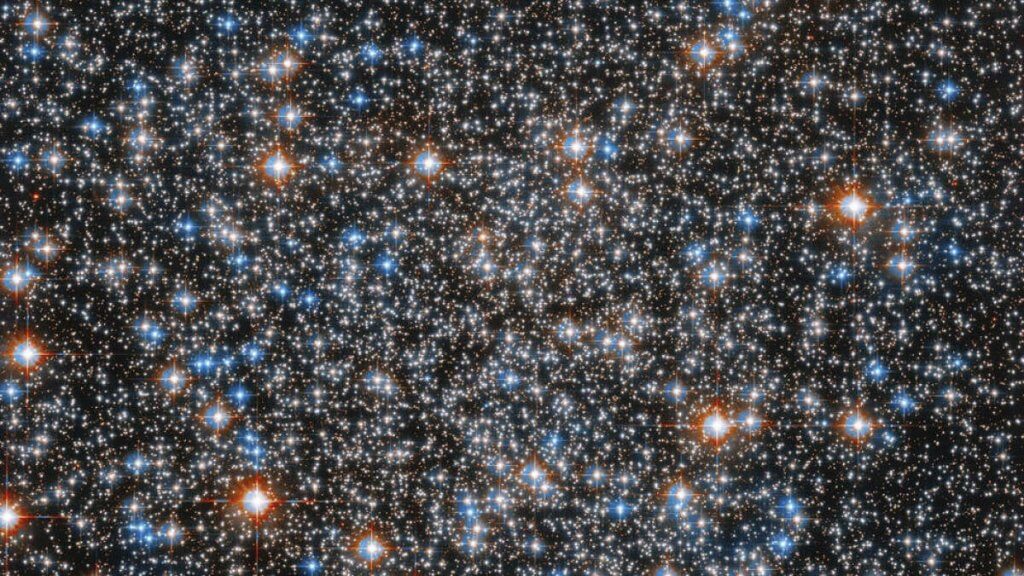Even under clear skies in areas with hardly any light pollution, this view into space would look like nothing more than a round hazy splotch through binoculars.
But in a newly released Hubble Space Telescope(Opens in a new tab) image, this globular cluster(Opens in a new tab) in the constellation Sagittarius is a glittering spread of jewels, scattered atop a black velvet blanket. Globular clusters(Opens in a new tab) are tight spherical groups of stars: disco balls of the cosmos. This one is dubbed Messier 55, or collectively the “Summer Rose Star.”
The advantage of Hubble is its clear view from low-Earth orbit, making it possible to resolve individual stars within clusters. Some telescopes on Earth can make out M55 stars, too, but fewer by comparison. Hubble has revolutionized the understanding of globular clusters, allowing astronomers to study what kinds of stars are within them. Scientists are also interested in learning how they evolve over time and the role gravity plays in their composition.
Tweet may have been deleted
(opens in a new tab)
(Opens in a new tab)
Hubble has also contributed to the knowledge of so-called “blue stragglers(Opens in a new tab),” found in globular clusters such as this one. These objects got their name because they appear bluish and seem younger than other stars around them.
Under certain conditions, stars receive extra fuel that puts them on stellar steroids, bulking and brightening them up. Astronomers believe this happens when a star pulls material off a nearby neighbor or if they slam into each other. This phenomenon causes blue stragglers to Benjamin Button(Opens in a new tab), regressing from old age to a hotter, Brad Pitt-stage of stellar life.
Within Messier 55 are some 100,000 stars, each pinprick of light traveling through the cosmos for 20,000 years before reaching the sensors of the legendary observatory, run cooperatively by NASA and the European Space Agency. This snapshot is just a portion of the whole cluster, which spans 100 light-years.

Credit: NASA / ESA / A. Sarajedini / M. Libralato / Gladys Kober
Want more science and tech news delivered straight to your inbox? Sign up for Mashable’s Top Stories newsletter today.
The globular cluster was first spotted in 1752 by a French astronomer in present-day South Africa. But famed observer Charles Messier(Opens in a new tab) had trouble seeing it when building his catalog of nebulae and star clusters(Opens in a new tab), likely because Messier 55 lacks a dense core, and many of its stars are inherently dim, according to NASA(Opens in a new tab). From his Paris observatory, a thick layer of atmosphere and water vapor clouded his view. He didn’t record the object for another 26 years.
What makes this cluster appear spherical is the extreme gravitational pull among the stars, drawing them together. Among this grouping are 55 variable stars whose brightness change over time.
During the month of March(Opens in a new tab), many amateur and professional astronomers attempt to view all 110 cosmic targets in the Northern Hemisphere recorded in Messier’s catalog. Hubble has taken pictures of nearly all of them.

